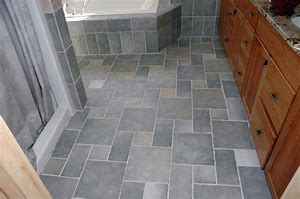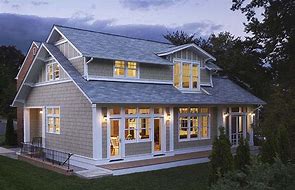
I’m selfishly asking because I’m pondering this very question myself. What’s the cost-benefit analysis look like? Our home is over 20 years old and there are many areas that are starting to show some age (don’t believe me. . . just ask my wife). For example our kitchen is pretty dated. Yes, we watch too much HGTV, and we really enjoy the show Fixer Upper.

I realize that Fixer Upper is just a TV show (but we love Chip & Joanna anyhow) but this got me to thinking about when is it smart to spend some hard-earned money on home improvements? Maybe you recently received a tax refund (national average is over $3,000) or a bonus (from the tax reform act) and are wondering if you should invest some of that in your largest investment – your home?
Before you consider a reno project – calculate you housing expense as a percentage of your income? If it’s greater than 30% then you should probably consider down-sizing to properly fit your budget (ideally 25% of your income, or less). See my previous post on how to decide whether to buy or rent your next house.
On the other hand, if you recently started a family and currently have a one bedroom condo – then maybe you should sell your condo and look for a new place, with more room, to raise your expanding family.
Let me start this analysis off by giving a nod to Dave Ramsey and encourage everyone to properly budget for any home improvements you want to tackle – I don’t want that nice kitchen remodel to be financed via a home equity loan. Your renovation idea might be a great investment, more on that later in the post, but I want you to eventually be debt-free. Don’t try to borrow your way to prosperity by “investing” in a $20,000 gourmet kitchen. Enough small talk – should I spend some of my hard-earned money on updating my 20 something year old home (or not)?
I think it really depends on three things.
1) How long do you plan to stay in your home? The answer to this question will probably determine how much you should spend and what priorities you should have. If you plan to stay put for a few years then keep reading.
2) Is this improvement going to make your life better? Think of the improvement to your current situation as the dividend that this “investment” pays.
3) Finally, will this improvement increase the value of the home when I eventually sell it? I encourage you to walk through your home and objectively evaluate which areas are significantly out-of-date; especially relative to houses in your neighborhood. I encourage you to observe your neighbors’ homes – have most updated their kitchens to granite or quartz counter-tops? If they have – and you still have the original laminate from 20 or 30 years ago – then this might be a big negative to a would-be buyer. I suggest you hire a professional interior designer ($100 or so) to evaluate your home, before you consider a major renovation project; or have a realtor friend come by and give you some free advice on what potential buyers in your area expect.
If you home is over 20 years old, it’s probably also worth your money to pay for another inspection; to see if there are any significant repairs that will necessarily precede any nice-to-have improvement projects you’re dreaming of.
I found some suggested improvements – at different price points – from a USA today article (Nerd Wallet). I think these ideas will potentially make your life better today, as well as be attractive to a would-be buyer in the future.
$100
Replace Cabinet hardware. Changing knobs or handles is a pretty simple DIY project and gives your cabinets a fresh, updated look. Maybe you have some outdated brass hardware – consider something more modern like brushed nickle or a classic black to spruce up your kitchen.

A couple more inexpensive projects they didn’t mention (but I will). Replace an outdated light fixture in your kitchen – could make a huge difference in the look and feel of the kitchen. Or consider spending $100 to have your carpets professionally cleaned. The air quality in your house might be unhealthy . . .
$500
Add a tile backsplash. This might not be a good DIY project but a backsplash is much less expensive than a full kitchen remodel and can still significantly change the look and feel of your kitchen.

Refresh interior paint. New paint in some of the main rooms can really brighten up the whole house – and doing the work yourself can really reduce the cost of this project.
Insulate the attic. You can usually get a local insulation company to do a free evaluation of how much insulation you already have, and if you would benefit from additional insulation. You will enjoy lower utility bills and would-be buyers always love energy efficient homes.
$1,000
Tile a bathroom floor. You might still have the original laminate flooring – that is showing its wear from heavy foot traffic. Opt for bright, easy-to-clean tile instead.

Get a new front door. A new fiberglass door won’t swell or contract like a wooden door. Consider painting it red for a fresh look, as an upgrade to your curb appeal.

Replace inefficient appliances like an old water heater, refrigerator or dishwasher. You will appreciate the newer, more efficient appliances and would-be buyers will have one less thing to worry about when they move in. See my previous post on saving money on your utility bills.
https://jimmysmoneytips.com/2017/07/07/15/top-ways-to-reduce-your-heating-and-cooling-cost/
$3,000
Install new kitchen countertops. Almost all potential buyers want granite, quartz or one of the solid surfaces. Plus the kitchen is the most important room in evaluating a new home according to Zillow.

Replace the garage door. A new garage door recoups around 98% of its cost in improved home value. If you have the original white aluminum door, consider an upgrade to a carriage style door with a stained wood look. It will greatly increase the curb appeal and will mostly likely be more energy efficient as well.

Enhance your landscaping. Stone pavers, a fire pit or exterior lighting could really improve your curb appeal and functionality.

Most home improvements do not pay for themselves – via a higher sales price; however, they will likely impact if your home sells, and how quickly.
Some renovations manage to recover 80 to 90% of their costs, while others barely cover half their cost (bankrate.com) For this reason, I encourage you to pick projects that will enhance your current life – because you probably can’t justify adding a 5th bedroom to your house merely as an “investment”. It’s very unlikely that you will make a profit on your upgrades. Don’t upgrade beyond your neighborhood. Adding a pool might be very unusual in your neighborhood and actually might be a detriment when trying to sell because you over-improved for your area.
If you decide to hire a contractor, shop around and ask friends for recommendations; at least get some references from the contractor and speak with them. I encourage you to get multiple quotes (3 preferably) if you plan on spending more than $1,000.
Remember that most repairs and maintenance won’t increase the resale value of your home. If you recently replaced a leaky roof or an old HVAC system don’t expect to raise the selling price to cover those costs. It might actually hurt your resale price if you don’t do these necessary repairs. . .
My advice is to focus on small projects that you can afford and that truly make your life better today. I recommend you focus on the kitchen – especially if it’s out-of-date (like mine). Please steer clear of big projects like an in-ground pool or a gourmet kitchen. These projects might involve debt and are probably lousy investments anyhow.


Recent Comments